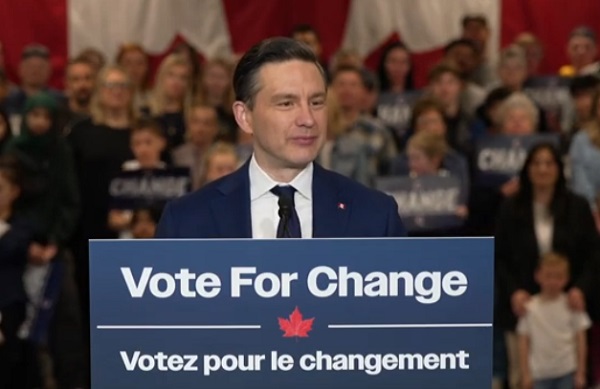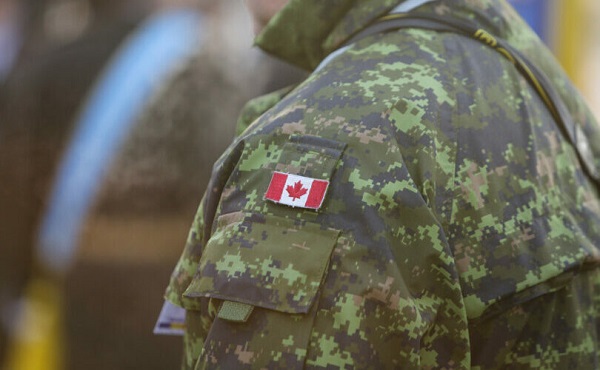Alberta
Alberta $8.8 billion education budget – plan to hire 3,000 new staff

Alberta’s government is committed to providing the support and services students need to succeed, and the resources schools need to support teachers and their staff. Budget 2023 increases the operating budget for the Ministry of Education by nearly $2 billion over the next three years. This will support hiring up to 3,000 education staff, including teachers, educational assistants, bus drivers and school support staff.
In the 2023-24 school year, Alberta will spend about $8.8 billion on education for students in kindergarten to Grade 12, the equivalent of $44 million for every day students are in school and an increase of more than five per cent.
“School authorities in Alberta deserve a government that will support them in addressing this year’s unprecedented enrolment growth, be properly resourced to address complex learning needs, and make transportation safer and more affordable. This investment addresses rising enrolment, helps meet students’ diverse needs and helps school authorities combat inflation.”
“Our children are our future and Budget 2023 ensures every child is supported in the classroom. By investing in our education system, we are ensuring students are prepared for success throughout their lives. While inflation continues to be a challenge, we are providing stable, predictable funding so school authorities can hire the staff they need to help students learn.”
Welcoming more students
Alberta’s booming economy led to one of its largest-ever population increases in 2022, which has meant more students in Alberta schools. Budget 2023 will provide increased funding to school authorities of $820 million specifically to support enrolment growth over the next three years.
This increased funding will begin the work to address class sizes by allowing school authorities to hire more teachers and classroom staff over the next three years. The increase will come through a variety of existing grants that include an enrolment component.
“Dozens of school projects are in the planning, design or construction phases right now across Alberta. Through Budget 2023, we’ll be adding approximately 20,000 more new and modernized student spaces that will help to ensure our kids get to go to school in their own communities in world-class facilities.”
Meeting students’ unique needs
Budget 2023 includes almost $1.5 billion in Learning Support funding for Alberta’s most vulnerable students, those with specialized learning needs and those requiring additional help at school. This includes specialized learning supports, program unit funding, English as a second language, refugee students, First Nations, Métis and Inuit.
On top of the funding increase for enrolment growth, Budget 2023 also includes targeted funding of $126 million over three years to increase staffing. This funding will allow school authorities to hire more educational assistants or increase their hours, provide more training opportunities for staff and/or hire specialists such as counsellors, psychologists, interpreters and more teachers.
These additional supports will give schools the ability to work more closely with students who have diverse learning needs, such as those with disabilities or those learning English as an additional language. This new funding will be delivered through a new targeted grant to school authorities. Overall, Budget 2023 includes almost $1.5 billion in Learning Support funding for Alberta’s most vulnerable students, those with specialized learning needs and those requiring additional help at school.
To help close learning gaps caused by the pandemic, Alberta’s government will spend an additional $20 million over the next two years to assist students in grades 1 to 5. This increased funding builds off previous successes to help students regain literacy and numeracy skills.
Increasing affordability for transportation
School authorities will also receive an additional $414 million over the next three years through Budget 2023 to support increased transportation funding that will result in more students having access to provincially funded transportation services. This increased funding will lower fees charged to thousands of parents, address rural ride times and cost pressures, and address rising costs for driver training.
Budget 2023 highlights
- Budget 2023 will increase staffing supports in complex classrooms by up to 10 per cent, which will enhance experiences and have positive effects on students’ personal and social development.
- The government is investing $50 million to support mental health pilot projects over the next two years to improve K-12 students’ well-being.
- Rising inflationary pressures are affecting school authorities and families. Budget 2023 will boost transportation funding to offset rising transportation costs like insurance, fuel and driver training. These costs are often passed on to Alberta families, so increasing the amount of funding available will decrease the parent fees associated with school transportation.
Budget 2023 secures Alberta’s future by transforming the health-care system to meet people’s needs, keeping our communities safe, and growing the economy with more jobs, quality education and continued diversification.
Alberta
Low oil prices could have big consequences for Alberta’s finances

From the Fraser Institute
By Tegan Hill
Amid the tariff war, the price of West Texas Intermediate oil—a common benchmark—recently dropped below US$60 per barrel. Given every $1 drop in oil prices is an estimated $750 million hit to provincial revenues, if oil prices remain low for long, there could be big implications for Alberta’s budget.
The Smith government already projects a $5.2 billion budget deficit in 2025/26 with continued deficits over the following two years. This year’s deficit is based on oil prices averaging US$68.00 per barrel. While the budget does include a $4 billion “contingency” for unforeseen events, given the economic and fiscal impact of Trump’s tariffs, it could quickly be eaten up.
Budget deficits come with costs for Albertans, who will already pay a projected $600 each in provincial government debt interest in 2025/26. That’s money that could have gone towards health care and education, or even tax relief.
Unfortunately, this is all part of the resource revenue rollercoaster that’s are all too familiar to Albertans.
Resource revenue (including oil and gas royalties) is inherently volatile. In the last 10 years alone, it has been as high as $25.2 billion in 2022/23 and as low as $2.8 billion in 2015/16. The provincial government typically enjoys budget surpluses—and increases government spending—when oil prices and resource revenue is relatively high, but is thrown into deficits when resource revenues inevitably fall.
Fortunately, the Smith government can mitigate this volatility.
The key is limiting the level of resource revenue included in the budget to a set stable amount. Any resource revenue above that stable amount is automatically saved in a rainy-day fund to be withdrawn to maintain that stable amount in the budget during years of relatively low resource revenue. The logic is simple: save during the good times so you can weather the storm during bad times.
Indeed, if the Smith government had created a rainy-day account in 2023, for example, it could have already built up a sizeable fund to help stabilize the budget when resource revenue declines. While the Smith government has deposited some money in the Heritage Fund in recent years, it has not created a dedicated rainy-day account or introduced a similar mechanism to help stabilize provincial finances.
Limiting the amount of resource revenue in the budget, particularly during times of relatively high resource revenue, also tempers demand for higher spending, which is only fiscally sustainable with permanently high resource revenues. In other words, if the government creates a rainy-day account, spending would become more closely align with stable ongoing levels of revenue.
And it’s not too late. To end the boom-bust cycle and finally help stabilize provincial finances, the Smith government should create a rainy-day account.
Alberta
Governments in Alberta should spur homebuilding amid population explosion

From the Fraser Institute
By Tegan Hill and Austin Thompson
In 2024, construction started on 47,827 housing units—the most since 48,336 units in 2007 when population growth was less than half of what it was in 2024.
Alberta has long been viewed as an oasis in Canada’s overheated housing market—a refuge for Canadians priced out of high-cost centres such as Vancouver and Toronto. But the oasis is starting to dry up. House prices and rents in the province have spiked by about one-third since the start of the pandemic. According to a recent Maru poll, more than 70 per cent of Calgarians and Edmontonians doubt they will ever be able to afford a home in their city. Which raises the question: how much longer can this go on?
Alberta’s housing affordability problem reflects a simple reality—not enough homes have been built to accommodate the province’s growing population. The result? More Albertans competing for the same homes and rental units, pushing prices higher.
Population growth has always been volatile in Alberta, but the recent surge, fuelled by record levels of immigration, is unprecedented. Alberta has set new population growth records every year since 2022, culminating in the largest-ever increase of 186,704 new residents in 2024—nearly 70 per cent more than the largest pre-pandemic increase in 2013.
Homebuilding has increased, but not enough to keep pace with the rise in population. In 2024, construction started on 47,827 housing units—the most since 48,336 units in 2007 when population growth was less than half of what it was in 2024.
Moreover, from 1972 to 2019, Alberta added 2.1 new residents (on average) for every housing unit started compared to 3.9 new residents for every housing unit started in 2024. Put differently, today nearly twice as many new residents are potentially competing for each new home compared to historical norms.
While Alberta attracts more Canadians from other provinces than any other province, federal immigration and residency policies drive Alberta’s population growth. So while the provincial government has little control over its population growth, provincial and municipal governments can affect the pace of homebuilding.
For example, recent provincial amendments to the city charters in Calgary and Edmonton have helped standardize building codes, which should minimize cost and complexity for builders who operate across different jurisdictions. Municipal zoning reforms in Calgary, Edmonton and Red Deer have made it easier to build higher-density housing, and Lethbridge and Medicine Hat may soon follow suit. These changes should make it easier and faster to build homes, helping Alberta maintain some of the least restrictive building rules and quickest approval timelines in Canada.
There is, however, room for improvement. Policymakers at both the provincial and municipal level should streamline rules for building, reduce regulatory uncertainty and development costs, and shorten timelines for permit approvals. Calgary, for instance, imposes fees on developers to fund a wide array of public infrastructure—including roads, sewers, libraries, even buses—while Edmonton currently only imposes fees to fund the construction of new firehalls.
It’s difficult to say how long Alberta’s housing affordability woes will endure, but the situation is unlikely to improve unless homebuilding increases, spurred by government policies that facilitate more development.
-

 2025 Federal Election2 days ago
2025 Federal Election2 days agoTrump Has Driven Canadians Crazy. This Is How Crazy.
-

 2025 Federal Election2 days ago
2025 Federal Election2 days agoThe Anhui Convergence: Chinese United Front Network Surfaces in Australian and Canadian Elections
-

 Automotive1 day ago
Automotive1 day agoHyundai moves SUV production to U.S.
-

 Entertainment2 days ago
Entertainment2 days agoPedro Pascal launches attack on J.K. Rowling over biological sex views
-

 2025 Federal Election1 day ago
2025 Federal Election1 day agoAs PM Poilievre would cancel summer holidays for MP’s so Ottawa can finally get back to work
-

 2025 Federal Election1 day ago
2025 Federal Election1 day agoPoilievre Campaigning To Build A Canadian Economic Fortress
-

 armed forces15 hours ago
armed forces15 hours agoYet another struggling soldier says Veteran Affairs Canada offered him euthanasia
-

 2025 Federal Election2 days ago
2025 Federal Election2 days agoCarney Liberals pledge to follow ‘gender-based goals analysis’ in all government policy





